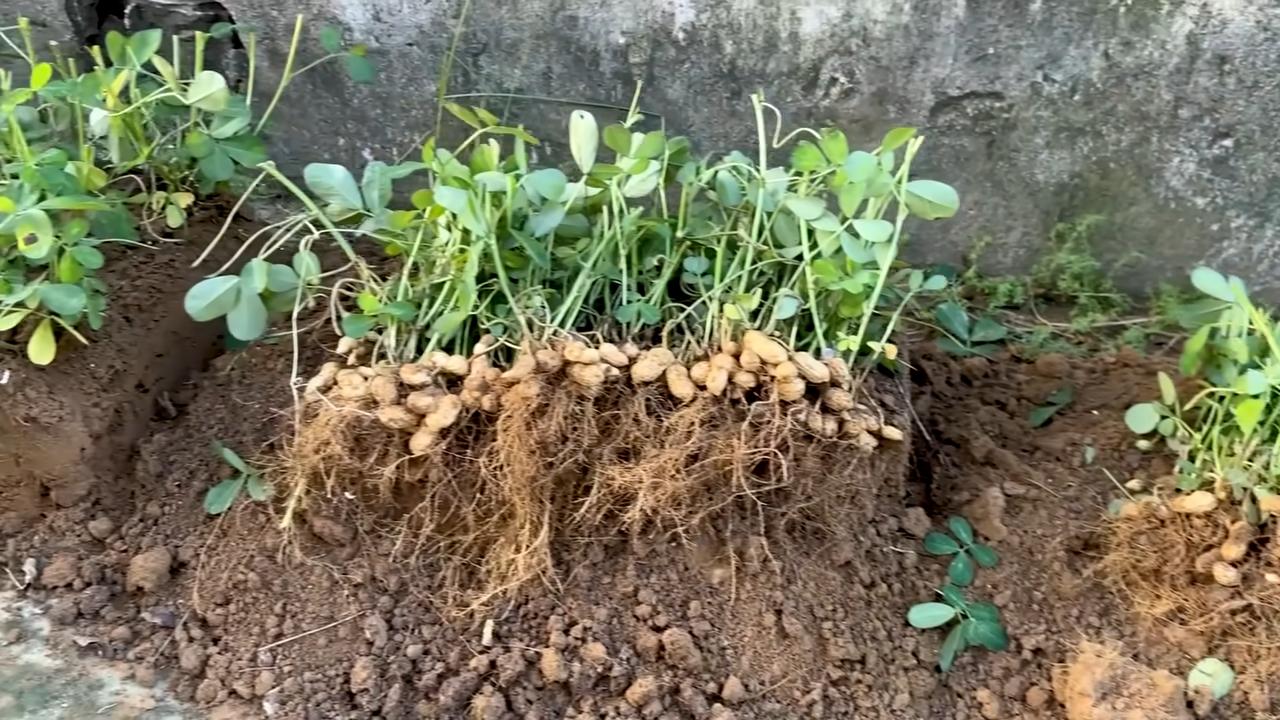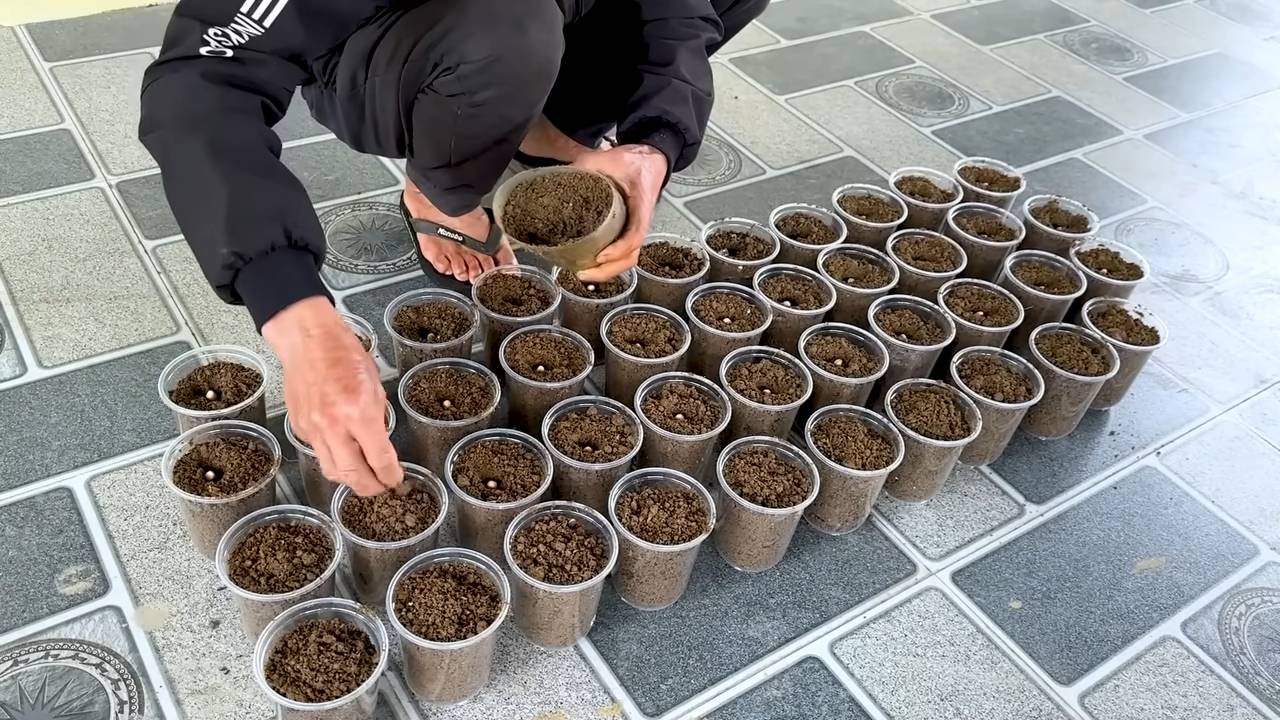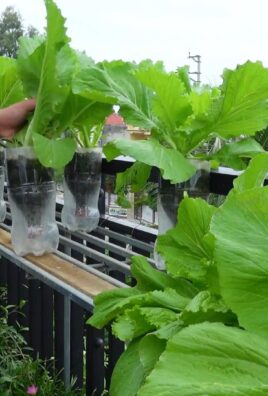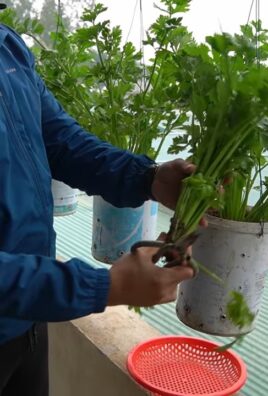Grow peanuts at home? Absolutely! Imagine the satisfaction of harvesting your own homegrown peanuts, ready to be roasted, turned into creamy peanut butter, or simply enjoyed as a healthy snack. It’s easier than you might think, and this DIY guide will walk you through every step of the process, from planting to harvesting.
Peanuts, also known as groundnuts, have a rich history, dating back thousands of years in South America. They weren’t always a staple in Western diets, but thanks to agricultural innovations and the work of figures like George Washington Carver, peanuts became a widely accessible and nutritious food source. Now, you can participate in this agricultural legacy right in your own backyard!
Why should you learn to grow peanuts at home? Well, for starters, you’ll know exactly where your food comes from and what’s gone into growing it. Plus, it’s a fantastic way to connect with nature, learn about the plant life cycle, and enjoy the freshest, most flavorful peanuts you’ve ever tasted. With rising food costs and a growing interest in sustainable living, mastering this simple DIY project is a win-win. So, let’s get our hands dirty and start growing!

Growing Peanuts at Home: Your Comprehensive DIY Guide
Hey folks! Have you ever wondered how peanuts actually grow? I’ve always been fascinated by these little powerhouses and thought to myself, “Why not just grow some myself?” And that’s exactly what I did! Today I’m sharing my experiences with you and showing you how you can grow your own peanuts at home. It’s easier than you think, and the result is incredibly satisfying.
What You Need: The Preparation
Before we get started, we obviously need the right equipment. Here’s a list of everything you’ll need for your peanut adventure:
- Peanuts: Important! Use raw, unroasted peanuts. The roasted ones unfortunately can no longer germinate. You can often find them in health food stores or organic markets. Make sure they still have their skin on.
- Pots or containers: Choose pots with a diameter of at least 20 cm (8 inches) and a depth of 25 cm (10 inches). Peanuts need space for their roots and for the peanuts to form.
- Soil: A well-draining, sandy loam soil mix is ideal. You can mix potting soil with some sand to improve drainage.
- Water: Clear, clean water for watering.
- Sunlight: Peanuts love the sun! Choose a location with at least 6-8 hours of direct sunlight per day.
- Optional: Compost or organic fertilizer to enrich the soil.
Step-by-Step Guide: Sowing and Care
Now let’s get down to it! Here is a detailed guide on how to sow and care for your peanuts:
- Prepare the peanuts:
- Soak the peanuts in lukewarm water for 24 hours. This helps to speed up germination.
- You can also carefully shell the peanuts, but this isn’t strictly necessary. If you do shell them, be careful not to damage the thin skin around the peanut.
- Prepare the pots:
- Fill the pots with your soil-sand mixture. Leave about 2-3 cm (1 inch) of space to the rim.
- Water the soil thoroughly so that it is moist but not wet.
- Sowing:
- Make small holes in the soil, about 2-3 cm (1 inch) deep.
- Place 2-3 peanuts in each hole. This increases the chance that at least one will germinate.
- Cover the peanuts with soil and press down lightly.
- Watering:
- Water the soil gently so that it stays moist. Avoid waterlogging, as this can lead to rot.
- Location:
- Place the pots in a warm, sunny spot. Peanuts need a lot of light and warmth to thrive.
- Care:
- Watering: Keep the soil moist, but not wet. Water regularly, especially on hot days.
- Fertilizing: Fertilize the plants every 2-3 weeks with an organic fertilizer or compost. This promotes growth and peanut formation.
- Mounding (Hilling): When the plants are about 15-20 cm (6-8 inches) tall, mound soil up around the base of the plants. This encourages the formation of side shoots where the peanuts will develop.
- Flowers: Peanut plants produce yellow flowers. After fertilization, the flower stalks bend down and push into the soil. The peanuts then develop there.
- Weed removal: Keep the pots free of weeds, as they can take nutrients and water from the peanut plants.
The Harvest: Patience Pays Off
Harvest time is the most exciting part! Peanuts take about 4-5 months to mature. Here are the signs that it’s time to harvest:
- Yellowing leaves: The leaves of the peanut plants will start to turn yellow and die back.
- Dry soil: The soil around the plants is dry and cracked.
- Check the peanuts: Carefully dig up one plant and check the peanuts. They should be fully developed and the shells should be hard.
Here’s how to harvest your peanuts:
- Dig up the plants: Carefully dig up the plants with a digging fork. Be careful not to damage the peanuts.
- Shake off the soil: Shake the soil off the plants.
- Drying: Hang the plants upside down in a dry, airy place. Let them dry there for 2-3 weeks.
- Remove the peanuts: Break the peanuts off the plants.
- Curing: Let the peanuts cure for a few more days in a warm, dry place.
Common Problems and Solutions
Problems can also arise when growing peanuts. Here are some of the most common issues and how you can solve them:
- Poor germination:
- Cause: Peanuts are too old, temperatures are too cold, soil is too wet.
- Solution: Use fresh peanuts, ensure warm temperatures (at least 20°C / 68°F), and ensure good drainage.
- Yellow leaves:
- Cause: Nutrient deficiency, lack of water, pests.
- Solution: Fertilize the plants regularly, water sufficiently, and check for pests.
- Pests:
- Cause: Aphids, spider mites, slugs.
- Solution: Remove pests manually or use organic pesticides.
- Fungal diseases:
- Cause: Soil is too wet, poor air circulation.
- Solution: Ensure good drainage and air circulation. Remove affected leaves.
Additional Tips for Successful Peanut Growing
Here are a few more tips to help you maximize your peanut harvest:
- Variety selection: There are different varieties of peanuts. Find out which variety is best suited for your climate.
- Crop rotation: Don’t grow peanuts in the same spot every year. Rotate your plants to keep the soil healthy.
- Soil improvement: Mix compost or organic fertilizer into the soil to enrich it.
- Observation: Observe your plants regularly to identify and fix problems early.
Conclusion: It’s Worth It!
Growing peanuts at home is a great project that is fun and rewards you with delicious, homegrown peanuts. It requires some patience and care, but the result is well worth it. Give it a try and let me know how it went for you! I’m excited to hear about your experiences. Good luck with your peanut growing!

Conclusion
So, there you have it! Growing peanuts at home is not only achievable, but it’s also a deeply rewarding experience. Forget the store-bought varieties that often lack the freshness and vibrant flavor of homegrown produce. This DIY trick unlocks the potential to cultivate your own supply of delicious, all-natural peanuts, right in your backyard or even in containers on your patio.
Why is this a must-try? Because it connects you to the source of your food in a tangible way. You’ll witness the entire life cycle of the peanut plant, from the initial sprout to the moment you harvest your own bounty. It’s an educational experience for the whole family, and a fantastic way to introduce children to the wonders of gardening and the importance of sustainable food practices. Plus, the taste of freshly harvested, homegrown peanuts is simply unparalleled. The flavor is richer, the texture is more satisfying, and you have the peace of mind knowing exactly where your food came from and how it was grown.
Beyond the basic method outlined, there are numerous variations you can explore to tailor the process to your specific needs and preferences. Consider experimenting with different peanut varieties, such as Virginia, Spanish, or Runner peanuts, each offering a unique flavor profile and growth habit. You can also adjust the soil composition to optimize drainage and nutrient content, or try companion planting with beneficial herbs and vegetables to deter pests and enhance growth. For those with limited space, container gardening is an excellent option, allowing you to grow peanuts even on a small balcony or patio. Just be sure to choose a large enough container to accommodate the plant’s root system and provide adequate drainage.
Don’t be afraid to get your hands dirty and experiment! Gardening is all about learning and adapting, so embrace the challenges and celebrate the successes along the way. The satisfaction of harvesting your own peanuts is well worth the effort.
We wholeheartedly encourage you to try this DIY trick and experience the joy of growing peanuts at home for yourself. It’s a simple, yet profound way to connect with nature, enhance your culinary creations, and enjoy the unparalleled flavor of homegrown produce.
Once you’ve embarked on your peanut-growing adventure, we’d love to hear about your experiences! Share your tips, tricks, and triumphs in the comments section below. Let’s create a community of peanut enthusiasts, sharing our knowledge and inspiring others to embrace the joys of homegrown food. Did you try a specific variety? Did you encounter any challenges? What were your favorite ways to enjoy your homegrown peanuts? Your insights will be invaluable to other aspiring peanut growers. So, go ahead, give it a try, and let us know how it goes! Happy growing!
Frequently Asked Questions (FAQ)
What is the best time of year to plant peanuts?
The ideal time to plant peanuts is in the spring, after the last frost has passed and the soil has warmed to at least 65 degrees Fahrenheit (around 18 degrees Celsius). Peanuts require a long growing season of at least 120-150 days, so starting them early in the spring will give them ample time to mature before the first frost of fall. In warmer climates with longer growing seasons, you may be able to plant peanuts later in the spring or even early summer. However, it’s crucial to ensure that they have enough time to mature before the weather turns cold. Check your local climate data and planting guides to determine the optimal planting time for your region.
What kind of soil is best for growing peanuts?
Peanuts thrive in well-drained, sandy loam soil. This type of soil allows for good aeration and drainage, which is essential for healthy root development and prevents the peanuts from rotting. The soil should also be loose and friable, making it easy for the peanut pegs (the stems that develop after flowering and bury themselves in the ground to form the peanuts) to penetrate the soil. Avoid heavy clay soils, as they can become waterlogged and compacted, hindering peanut development. If you have clay soil, you can amend it with organic matter, such as compost or well-rotted manure, to improve drainage and aeration. A slightly acidic to neutral soil pH of 6.0 to 7.0 is ideal for growing peanuts.
How much sunlight do peanut plants need?
Peanut plants require at least 6-8 hours of direct sunlight per day to thrive. Sunlight is essential for photosynthesis, the process by which plants convert light energy into chemical energy for growth and development. Insufficient sunlight can lead to stunted growth, reduced yields, and poor peanut quality. Choose a planting location that receives ample sunlight throughout the day. If you are growing peanuts in containers, make sure to place them in a sunny spot, such as a south-facing balcony or patio.
How often should I water peanut plants?
Peanut plants need consistent moisture, especially during flowering and pod development. Water deeply and regularly, ensuring that the soil remains consistently moist but not waterlogged. Avoid overhead watering, as it can promote fungal diseases. Instead, water at the base of the plants, using a soaker hose or drip irrigation system. The frequency of watering will depend on the weather conditions, soil type, and plant size. In general, water peanut plants every 2-3 days during dry periods, and less frequently during rainy periods. Check the soil moisture regularly by inserting your finger into the soil. If the top inch of soil feels dry, it’s time to water.
How do I know when my peanuts are ready to harvest?
Determining the right time to harvest peanuts is crucial for optimal flavor and quality. The best indicator is the maturity of the pods. About 120-150 days after planting, or when the foliage starts to yellow and die back, dig up a few plants and check the pods. The pods should be fully developed, with a prominent veining pattern and a dark inner shell. The kernels inside should be plump and fully formed, with a reddish-brown skin. If the kernels are still small and white, the peanuts are not yet ready to harvest. If the pods are starting to sprout, you’ve waited too long. Harvest the peanuts on a dry day to prevent fungal diseases.
Can I grow peanuts in containers?
Yes, you can successfully grow peanuts in containers, making it a great option for those with limited space. Choose a large container, at least 18 inches in diameter and 12 inches deep, to accommodate the plant’s root system. Ensure that the container has drainage holes to prevent waterlogging. Use a well-draining potting mix that is rich in organic matter. Follow the same planting and care instructions as for growing peanuts in the ground. Place the container in a sunny location and water regularly. You may need to fertilize container-grown peanuts more frequently than those grown in the ground, as the nutrients in the potting mix can be depleted more quickly.
What are some common pests and diseases that affect peanut plants?
Peanut plants can be susceptible to various pests and diseases, including aphids, spider mites, leafhoppers, nematodes, and fungal diseases such as leaf spot and white mold. Monitor your plants regularly for signs of infestation or disease. Use organic pest control methods, such as insecticidal soap or neem oil, to control aphids, spider mites, and leafhoppers. Rotate your crops regularly to prevent nematode infestations. Ensure good air circulation and avoid overhead watering to prevent fungal diseases. Remove any infected leaves or plants promptly to prevent the spread of disease. Consider using disease-resistant peanut varieties to minimize the risk of fungal infections.
How do I cure and store my homegrown peanuts?
After harvesting, cure your peanuts to improve their flavor and shelf life. Gently shake off any excess soil and spread the peanuts in a single layer on a wire mesh or screen in a well-ventilated area. Allow the peanuts to dry for 2-3 weeks, or until the shells are brittle and the kernels are loose inside. Turn the peanuts regularly to ensure even drying. Once the peanuts are cured, you can store them in airtight containers in a cool, dry place. Properly cured and stored peanuts can last for several months. You can also freeze peanuts for longer storage.




Leave a Comment